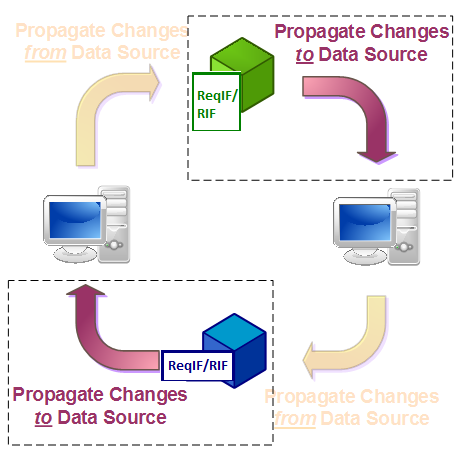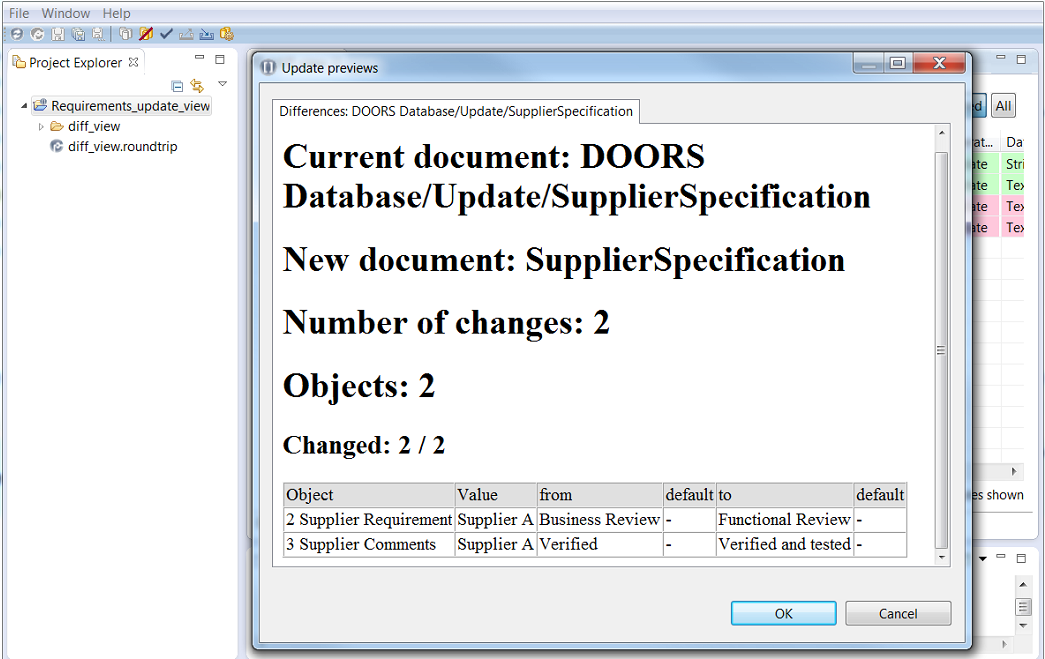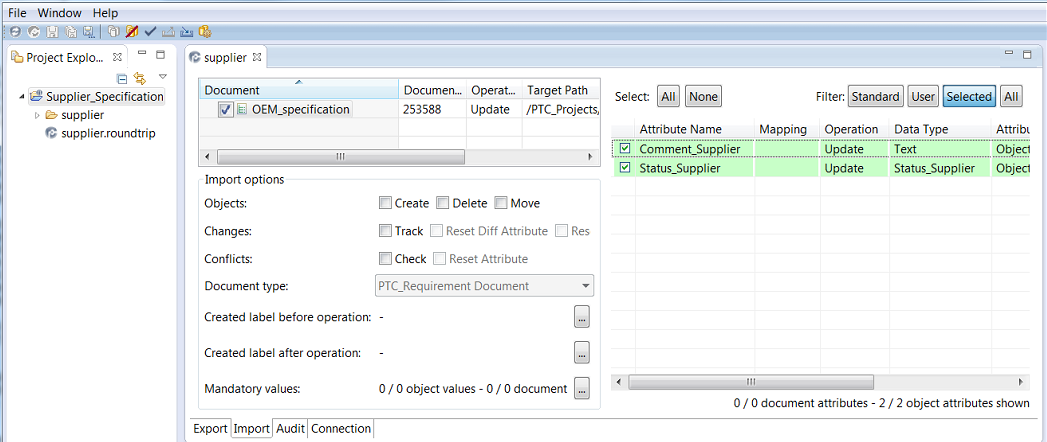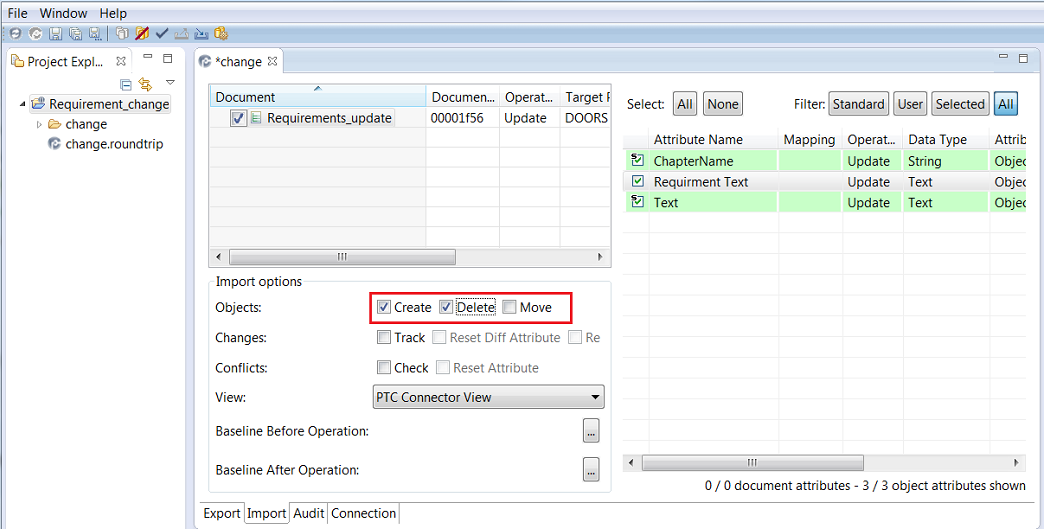Propagating changes to a data source
This section describes how changes to a data source can be propagated.
Update operation
Figure 142. Exchange process step

The process of propagating changes to a data source is similar to the process of joining a roundtrip. The main differences are that the exchange plan, the project structure and the roundtrip configuration already exist, plus all or some of the documents in the publication list have already been imported initially to the data source.
A roundtrip with local replication will not work properly if the configuration that was created at the initial operation (export in the case of the roundtrip initiator or import in the case of his suppliers) is not reused. It is vital to use this configuration for all subsequent operations with this exchange partner. |
Both the roundtrip initiator and the roundtrip participants propagate changes from their respective data sources during a roundtrip.
The employee responsible for the roundtrip must select the ReqIF/RIF file for the update. See select ReqIF/RIF file for roundtrip import for details. Additionally they have to set the update policies according to the exchange plan. See modify import settings for information about changing update policies.
Finally, the employee responsible for the roundtrip has to execute the update. See execute roundtrip import for details.
Before Windchill Requirements Connector actually executes the update, it will highlight the following:
• The differences in the publication list between ReqIF/RIF file and data source.
• Attributes that were added to or removed from any document in the publication list.
• The differences of attribute values within each document.
Figure 143. Difference of attribute value

This preview of the changes that Windchill Requirements Connector will perform on the data source can be used to control if the business partner has created the ReqIF/RIF file correctly according to the exchange plan, and if the update policies were set correctly. If the preview shows changes to the data source that are not intended, the update can be canceled without any changes to the data source. |
Example 9. Example: The customer updates his local data source
When the customer receives the comments of a supplier, they open the configuration that was created for the initial export to this supplier, select the import tab and add the ReqIF/RIF file with the comments from the supplier to the configuration.
See select ReqIF/RIF file for roundtrip import for details.
The relevant update policies should be adapted as defined in the exchange plan. In this example, the update policies of the customer should be rather restrictive: Because the suppliers are only allowed to change the value of their respective comment attribute, the customer should deactivate all settings for creating, deleting and moving objects or links. Additionally, they should deselect the requirement text attribute from the list of attributes to be updated, as the suppliers are not allowed to change the requirements directly.
Figure 144. Requirements change

See modify import settings for information about changing update policies.
Finally, the customer executes the update. See execute roundtrip import for details.
Example 10. Example: A supplier updates his local data source
When the supplier receives the revised user requirements and the new consolidated comments attribute, they open the configuration that they created for the initial import for this roundtrip, select the import tab and add the ReqIF/RIF file with the changed requirements from the customer to the configuration.
See select ReqIF/RIF file for roundtrip import for details.
In order to import the new consolidated comments attribute to the local data source, the employee responsible for the roundtrip has to select the new attributes (Operation Create is shown).
They also need to specify the update settings. In this example, they will need update policies that are less restrictive than those defined by the customer. As the customer can both add and delete requirements to the exchanged document, the update policies need to activate the create object and the delete object option.
Figure 145. Requirements delete

See modify import settings on how to change update policies and add attributes to a configuration.
Finally, the supplier executes the update. See execute roundtrip import for details.
Parent topic